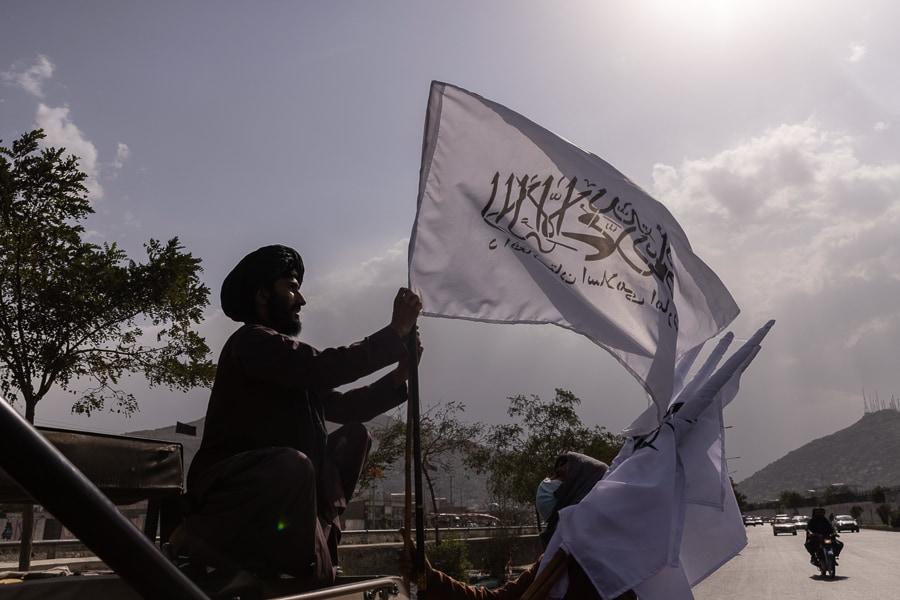
Under Taliban rule, life in Kabul transforms once again
Banks are closed, cash is growing scarce and food prices are rising, as residents struggle to lead their daily lives in an economy that is now suddenly in free fall
 A member of the Taliban fixes the group’s flag to his vehicle antenna after Friday prayers in Kabul, Afghanistan, August 20, 2021. A week after the Taliban walked back into power, government services were still largely unavailable and many residents struggled to lead their daily lives in an economy that has for a generation been propped up by American aid. Image: Victor J. Blue/The New York Times
A member of the Taliban fixes the group’s flag to his vehicle antenna after Friday prayers in Kabul, Afghanistan, August 20, 2021. A week after the Taliban walked back into power, government services were still largely unavailable and many residents struggled to lead their daily lives in an economy that has for a generation been propped up by American aid. Image: Victor J. Blue/The New York Times
The Americans are all but gone, the Afghan government has collapsed, and the Taliban rule the streets of Kabul now. Overnight, millions of Kabul residents have been left to navigate an uncertain transition after 20 years of U.S.-backed rule.
On Tuesday, nine days after the Taliban walked back into power, government services were still largely unavailable. Residents are struggling to lead their daily lives in an economy that, propped up for the past generation by American aid, is now suddenly in free fall.
Banks are closed, and cash is growing scarce even as food prices rise. Gas is becoming harder to find.
With U.S. forces clinging to the international airport to conduct a rushed evacuation, the Taliban continued to tighten their grip in the capital’s neighborhoods and streets. While relative calm reigned over the capital, in sharp contrast to the free-for-all at the airport, many residents hid in their homes or ventured out only cautiously to see what life might be like under their new rulers.
Reports varied according to neighborhoods and people, providing an evolving and sometimes contradictory snapshot of life in a city governed, once again, by the Taliban — a movement now promising moderation and inclusiveness but with a history of adherence to a harsh and uncompromising Islamist order of society.
©2019 New York Times News Service







